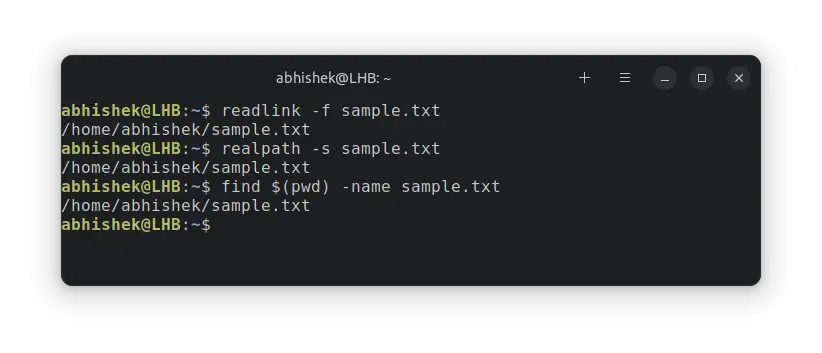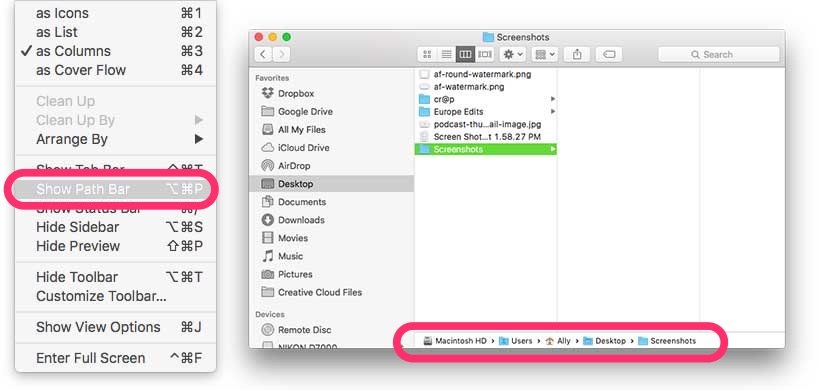
- #Finder show file path install
- #Finder show file path download
- #Finder show file path mac
- #Finder show file path windows
Give it a try and see how it helps streamline your workflow. It provides a quick and visual reference to your current location, allowing you to navigate through directories more efficiently. Leaving the Finder Path Bar enabled can greatly improve your file management in MacOS. Disabling the feature is just as straightforward. To disable the Finder Path Bar, either click View > Hide Finder Path Bar or use the same keyboard shortcut you used to show it. In Windows, if you have mapped network drives and you dont know the UNC path for them, you can start a command prompt ( Start Run cmd.exe) and use the net use command to list your mapped drives and their UNC paths: C:>net use New connections will be remembered. From the View menu, select “Show Path Bar.” The Path Bar will then appear at the bottom of the Finder window, allowing you to easily see and navigate the file system hierarchy. On your MacOS device, open the Finder app from either the Dock or the Launchpad. With the Path Bar, you can see the complete hierarchy of directories leading to your current location.Įnabling the Finder Path Bar is simple.
#Finder show file path windows
This can be especially useful when you’re unsure of the directory you’re in or need to navigate back to the previous or parent directory. In Windows 10, you had to right-click and then click 'open file location' in order to find the file location while in Windows 11 you just have to make a single left click on the file location via the search shortcut to find its location (see the screenshot provided by Sumit), so I dont understand when you. The Finder Path Bar is located at the bottom of the Finder window and displays the exact path of your current working folder. However, there is a feature called the Finder Path Bar that can make it even more convenient. MacOS Finder, in particular, is a user-friendly and helpful application. The same pie chart can also appear next to iCloud Drive in the sidebar, where it indicates the overall progress for files transferring to and from iCloud Drive.The file manager is an often overlooked but essential piece of software. Under the View menu, take a look at the Show Path Bar option. To do this, open a Finder window, then navigate to the toolbar at the top. First, you can show a breadcrumb list of the whole file path within the Finder. Pie chart: The pie chart status icon gradually increases from clear to dark as the files are transferred. Use the Automator App to Reveal a File Path on Mac. Out of Space: The Out of Space status icon indicates that the folder or file can’t be stored in iCloud because there isn’t enough iCloud storage.Ī similar icon can also appear next to iCloud Drive in the sidebar, where it indicates that iCloud storage is full. Waiting to Upload: The Waiting to Upload status icon indicates that the folder or file is not yet stored in iCloud.
#Finder show file path mac
To learn more about freeing up storage, see Optimize storage space.ĭownloaded: The Downloaded status icon indicates that the folder or file is up to date between your Mac and iCloud and you can view or edit it immediately, with or without an internet connection. This is usually because the size exceeds the 50 GB limit for an individual folder or file in iCloud Drive.

Ineligible: The Ineligible status icon indicates that the folder or file could not be stored in iCloud.
#Finder show file path download
Control-click the file, then choose Download Now. You must be connected to the internet to work with the item, unless you download it to your Mac. In iCloud: The In iCloud status icon indicates that the folder or file is only in iCloud. Now, if you attempt to duplicate the text in the bottom, it doesn’t work. Select Show Path Bar (This will locate the file path for your chosen file in the Finder window. When you use iCloud Drive to store documents on your Mac, your folders and files may appear with one of the following status indicators in the iCloud Status column: Here’s how you show and copy a file path on Mac’s context menu: 1. Get started with accessibility features.Use Sign in with Apple for apps and websites.Watch and listen together with SharePlay.

Share and collaborate on files and folders.Sync music, books, and more between devices.Make and receive phone calls on your Mac.Use one keyboard and mouse to control Mac and iPad.Use Live Text to interact with text in a photo.Make text and other items on the screen bigger.
#Finder show file path install
Install and reinstall apps from the App Store.


 0 kommentar(er)
0 kommentar(er)
